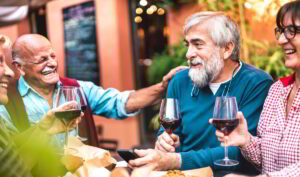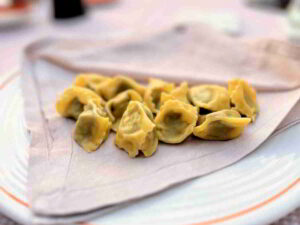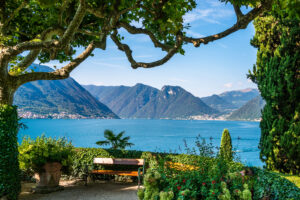Exploring the Piedmont Region of Italy Through Nebbiolo Wines
The Piedmont region is a not-to-be-missed hidden gem in Italy and heaven for Nebbiolo wine tours!
Although the territory has contrasting wine regions with different soil compositions and microclimates, and while specific characteristics of the Nebbiolo varietal persist across all wines, many other qualities express the soil of particular hills or regions, where Nebbiolo’s deep roots draw their nutrients.
From the famous Barolo and Barbaresco to lesser-known wines such as Roero, Gattinara, and Langhe Nebbiolo, Piedmont is the best region in the world for growing Nebbiolo grapes.
Curated Piedmont’s Nebbiolo Wine Tours are what you need to indulge in tastings at prestigious wineries scattered around the region, meet passionate winemakers, and explore vineyards nestled in breathtaking landscapes like the Langhe Hills near Alba.
Whether you’re a wine connoisseur or a curious beginner, these tours are designed to engage all levels of expertise.
Nebbiolo Wines Grape Facts
In Piedmont, there are three main biotypes (or sub-varieties) of Nebbiolo grape: Michet, Lampia, and Rosè.
Known as “the queen of the black grapes”, Nebbiolo prefers lime-rich soils, mostly in hilly areas with intense sun exposure, protected from spring frost. In Piedmont, Nebbiolo is grown at low elevations not exceeding 500 meters (1650 ft) above sea level.
Nebbiolo has one of the deepest root systems among Italian varieties. Its roots can be up to 7 meters (23ft) deep and can source from each underground layer.
With a black-purplish round berry, good productivity, and a medium-sized, three-lobed, orbicular or pentagonal leaf, Piedmont Nebbiolo Wine Tours are perfect to see up close the elongated, medium-sized bunches covered in a waxy substance visible on the grape skin.
Such a whitish veil reminds one of fog, and, according to some, the term Nebbiolo was given after nebbia, the Italian word for fog. On the contrary, it is considered a more reliable theory that the name derives from Nebbiolo ripening quite late and from the harvest taking place in the fall, when the first fog of the season appears in Piedmont.

Why Are The Langhe Hills Known for Nebbiolo Wines?
Piedmont’s Nebbiolo Wine Tours primarily take place on the Langhe Hills, which stand out as the world’s premier grape-growing region for Nebbiolo because of their distinctive geological and climatic features.
Nebbiolo, which buds early in spring and is harvested late in autumn, benefits from these hills’ natural conditions that allow it to reach ripeness while preserving acidity.
Piedmont’s secret lies beneath our feet, positively impacting winemaking and truffle growing. It is the region’s ancient seabed, which left behind layers of calcareous marl—limestone and clay mixed with sand. A geological transformation that occurred over 18 to 4 million years, which gave rise to the Langhe, Roero, and Monferrato Hills.
Sea fossils can still be found in southern Piedmont, and one of the most significant finds in recent decades is the skeleton of a whale, uncovered in the countryside near Asti and now preserved in the city’s fossil museum.
The Natural Conformation of the Langhe Hills
Such soil composition can vary significantly even within the same wine region and sometimes on the same hill, with layers of clay, sand, and minerals that influence flavor profiles. For example, the soils called Sant’Agata Fossil Marls in the Barolo and Barbaresco regions concentrate flavors and produce distinctive aromas of roses, tar, and spice. Another geologically classified soil, the Lequio Formation, adds structure and aging potential while facilitating the penetration and retention of heavy rain during the summer heat, allowing Nebbiolo’s deep roots to absorb moisture.
The Langhe’s topography, protected by the Alps to the west and the Apennines to the south, is fostering a distinctive microclimate. This environment, influenced by the breeze from the Tanaro River valley and seasonal Mediterranean winds known as the ‘marino,’ creates the uniqueness of these vineyard-clad hills.
Additionally, the long and parallel hillcrests of the Langhe run from south to north, maximizing sun exposure for many vineyards throughout the day. This strategic positioning, crucial for Barolo and Barbaresco, highlights the land’s influence on grape ripening and wine character.
Names of Nebbiolo Wines from the Langhe Hills
Piedmont wines are made from 100% Nebbiolo grapes; no blending of other grape varieties is allowed for any of the traditional and historical appellations. Depending on the production area and the requirements of the DOC or DOCG appellations to which each wine belongs, Nebbiolo wines are called by different names.
While Nebbiolo d’Alba DOC and Langhe Nebbiolo DOC are often overshadowed by their prestigious siblings, Barolo and Barbaresco, they offer exceptional quality and value. Although they are made from the same grape variety within the same region, they cannot carry the DOCG title due to strict production regulations. The reasons behind that can be:
The Nebbiolo was grown on less-celebrated hillsides or outside the strictly defined boundaries of the Barolo/Barbaresco zones
Grapes grown on northern-facing slopes receive less intense sunlight. While they produce high-quality wine, they do not meet the ripeness requirements for the DOCG status.
If a producer has a particularly bountiful harvest that exceeds the legal limit for Barolo, that “extra” wine must be declassified and sold under a different name, such as Langhe Nebbiolo.
The aging process is one of the most significant legal distinctions between these categories. Barolo requires a minimum of 38 months of aging (with 18 months in wood), while Barbaresco requires 26 months. If a winemaker chooses to age their wine for a shorter period, they must label it as a DOC wine rather than a DOCG.
When Did Barolo and Barbaresco Become Two Different Wines?
Piedmont’s Nebbiolo Wine Tours are primarily held in the two distinct wine regions of Barolo and Barbaresco, located on either side of Alba, roughly 30 minutes apart. All the details, fun facts, and interesting things to know about Barolo wine can be found in our article Top 11 Facts About Barolo Wine.
The Barolo wine was first aged in the first half of the 1800s, representing a significant improvement over the table wine produced in the region until then. Learn more about the Legendary History of Barolo Wine.
Before the current appellations existed, anyone around Alba aging Nebbiolo in wood would call Barolo their wine. Today, the DOCG appellation requires Barolo to be produced within a restricted zone comprising only eleven villages. On the contrary, farmers on the east side of Alba, encouraged by studies and soil analysis of local enologist Domizio Cavazza, by the early 1900s, teamed up and started calling their wine after the small hamlet of Barbaresco. The DOCG appellation defines the production area across the towns of Barbaresco, Neive, and Treiso, plus a small part of the Alba outskirts.
Arneis, Barbera, and Cortese, as well as very local, smaller productions of Ruchè, Grignolino, and Dolcetto, can be an interesting discovery alongside the bold Nebbiolo wines. This diversity means wine lovers can explore a wide range of flavors and styles, from robust reds to delicate whites, all within a single region.

Names of Nebbiolo Wines from the Roero Hills
The Roero Hills, north of Alba and of the Tanaro River, are known for a more sandy soil that, geologically, developed later than the Langhe Hills. Wines made from at least 95% Nebbiolo grape and the remaining part of other red varietals are named Roero DOCG and Roero Riserva. Aged at least 20 months (of which 6 are in barrel), it is generally fruity, with a ruby or garnet color and good texture.
Since the 15th century, Alba vineyards north of the Tanaro River have been home to a white grape variety called Arneis, ideal with appetizers, starters, and pasta dishes.
Nebbiolo Wines in Northern Piedmont
In northern Piedmont, less than one hour away from Milan Malpensa airport and from the lake district (Lake Maggiore, Lake Orta), lies a hilly territory.
There are great sun exposure benefits as well as the protection provided by the Alps. In fact, mountains stand behind like a shield, blocking cold winds and harsh weather from hitting the area. This is the area of wines like Ghemme, Gattinara, and Colli Novaresi.
Other Nebbiolo Wines
In most cases, 100% of Nebbiolo grape is used in these wines, produced across the Piedmont region:
Albugnano DOC
Outside of Piedmont, Nebbiolo wines can be found in nearby Lombardy, at the foot of the Alps as Sforzato di Valtellina DOCG, Valtellina Superiore DOCG, and other local wines.
A small area of the Aosta Valley hosts a Nebbiolo wine region. The grape can also be found in Umbria and Sardinia.
What Are the Tasting Notes of Popular Nebbiolo Wines?
For people who have never had Nebbiolo, it looks light and translucent like a Pinot Noir but carries the massive tannic structure and acidity of a heavy Cabernet Sauvignon.
The taste of Nebbiolo wine is often high in acidity and in-mouth drying tannins, making it quite tight and austere in its youth. Such tannins tend to soften or even disappear with aging.
The natural presence of tannins is why we can enjoy bold, full-bodied wines.
Leathery, gripping tannins cling to the front of the mouth, quickly revealing fruity notes and floral aromas, depending on the wine (see below).
The “classic” signature of Nebbiolo is famously described as “tar and roses,” but the specific tasting notes shift significantly depending on which sub-region (terroir) the wine comes from.
Nebbiolo is one of the most age-worthy wines in the world. As it sits in the cellar, its fruit profile moves from fresh to “dried,” and savory notes begin to dominate.
How do Nebbiolo wines from different regions compare in flavor?
When it comes to Barolo wine, the “bold” style is rooted in the villages of Serralunga d’Alba and Monforte d’Alba. In Serralunga, the earth is composed of compact, nutrient-poor sandstone and limestone, which forces the vines to struggle, resulting in wines often described as the most austere and long-lived in the region. These wines appeal to those who value complexity and aging potential, with heavy tannins that require many years of cellar aging to soften; also, deep, savory notes of iron, tobacco, and dried herbs.
Barbaresco wines tend to be generally more elegant and less aggressive than Barolo; however, the village of Neive stands out as a powerhouse, producing wines with intense structure and complexity that rival the most robust expressions of Barolo, showcasing its unique terroir within the region.
Back to the Barolo wine region, the softer, “feminine” wines come from the northern edge, across the villages of La Morra and Verduno, where younger Tortonian soils rich in sand and blue marl predominate. Silky textures and explosive aromatics create wines that feel approachable in their youth, offering a sense of finesse and elegance that appeals to those new to wine or seeking more refined, drinkable styles.
With the highest elevation in the area, the towns of La Morra (in the Barolo wine region) and Treiso (in the Barbaresco wine region), produce wines with signature spicy notes or floral complexity, ideal for those seeking for finesse over sheer power.
Piedmont’s Nebbiolo Wine Tours near the Lake District
In regions like Valtellina (Lombardy) and Gattinara, the grape—known locally as Chiavennasca and Spanna, respectively—must adapt to entirely different geological histories and climatic pressures, compared to the Langhe Hills. These differences in soil composition and climate result in wines that trade the muscular power of Barolo for a more vertical, mineral, and ethereal elegance, highlighting how terroir shapes Nebbiolo’s character.
In northern Piedmont, the village of Gattinara offers a distinct expression shaped by a violent volcanic past. While rising seas formed the Langhe, Gattinara sits on porphyry and iron-rich volcanic rock, which creates an environment so acidic that it would be inhospitable to most other grapes. This extreme soil acidity translates into wines with a profound savory, mineral character.
The climate in Gattinara is cooler and significantly wetter than in the Langhe. These wines lack the plushness of the Langhe but possess a relentless, driving acidity and a signature irony or “sanguine” note that allows them to age just as long as their more famous southern cousins.
Each region proves that Nebbiolo does not have a single “best” expression, but rather a spectrum of identities that are entirely dependent on the ground beneath the vine.

How to Identify High-Quality Nebbiolo Wines from Popular Brands
Identifying high-quality Nebbiolo can be a daunting task for beginners, so highlighting label markers helps consumers recognize reputable wineries and avoid illegitimate brands, especially since wines range from cheap 20€ bottles to thousand-euro investments. This is one of the things that are explained on our Piedmont’s Nebbiolo Wine Tours.
The most straightforward way to identify any Italian wine that has undergone stringent quality controls is to check for the paper seal wrapped around the bottle’s neck. This seal serves as a government-backed certificate of authenticity. For Nebbiolo wines, Barolo and Barbaresco have the DOCG (Denominazione di Origine Controllata e Garantita) seal, the highest level in the Italian wine classification system.
This designation guarantees that the wine has met rigorous production regulations for every step in the winemaking process, from the vineyard’s location to yields, fermentation, aging, and even the type and shape of the bottle.
The DOCG appellation committee randomly checks wine producers and issues a certain number of seals based on the size of the winery and its production. Each bottle has a unique identifying number and a QR code that certifies the wine’s origin and passes a demanding government tasting panel before being released for sale.
How Much Do Premium Nebbiolo Wines Typically Cost?
The price of Nebbiolo wines can vary significantly, even within the DOCG appellation. Younger, entry-level labels that have just been released tend to be much cheaper than aged ones. For instance, a young Barolo that has undergone the mandatory four years of aging can start at around 20-25€, especially if it is made from a blend of grapes grown within the same wine region but not from a specific vineyard.
Recommendations for Nebbiolo wines under a moderate budget can include Langhe Nebbiolo, Colline Novaresi, Albugnano, Roero, and several others. Many wine lovers commonly purchase the youngest wines on Piedmont’s Nebbiolo Wine Tours directly from wineries when they are first released, particularly if the vintage is considered outstanding. These wines can then be stored in private cellars, where they can continue to evolve and age. By doing this, collectors and wine enthusiasts can acquire bottles at a lower price than those that have already aged and are available in wine shops or restaurants.
The Barolo and Barbaresco wine regions were among the first in Italy to adopt a system of “Cru” designations, which already existed in France. Known as “MGA” (Menzioni Geografiche Aggiuntive), they refer to specific vineyards or parts of hillsides that stand out for exceptional characteristics, and that the wine was made only with those grapes.
The MGA will appear on the label as the name of a specific vineyard, in addition to the winery name. This detail can inspire you to appreciate wines made from grapes from a single, highly regarded vineyard, highlighting the wine’s unique origin and craftsmanship.
By labeling a wine with the name of the vineyard, a producer outlines the unique expression of a small territory rather than a more generic blend of grapes.
What Time of the Year is Best for Wine Tours in Piedmont?
Piedmont is charming all year round, and each season brings something to the experience. Spring and early summer offer pleasant weather and fewer tourists, making it easier to secure hotel and restaurant reservations.
The harvest season, typically from late September to October, is a fantastic time to experience the vibrant atmosphere of the vineyards, but it can also be more crowded.
Winter is also great for Piedmont’s Nebbiolo Wine Tours, except for the holiday season between Christmas and New Year’s Eve, when most wineries are closed.
How to Order Piedmont Wines for Delivery
Piedmont’s Nebbiolo Wine Tours offer a convenient and reliable way to buy wine directly from wineries, now with trusted door-to-door shipping services that ensure a smooth experience. For an additional cost, usually based on the number of bottles, wineries coordinate the entire journey of the wine from their cellar to your doorstep, giving you peace of mind.
Many wineries have partnered with specialized international couriers or wine-focused logistics platforms, whose expertise ensures your wine is handled with care. These services understand the complex bureaucracy involved in alcohol exports, VAT, and customs documentation, making the process feel trustworthy and straightforward.
Shipping costs are generally based on standard case sizes—typically 6 or 12 bottles—to ensure efficiency and safety. Wineries use specialized, eco-friendly reinforced packaging that protects the fragile Nebbiolo from breakage and thermal fluctuations, giving you confidence in the wine’s safe arrival. Insurance options further add to this sense of security against potential damage.
While international shipping fees can be significant—often ranging from €90 to €150 for a 6-bottle case, depending on the destination-understanding these costs helps buyers see the value of direct shipping, which can be more economical than purchasing at restaurants or wine shops abroad. For the US, this cost is about 13-15€ per bottle, in addition to the wine price. Two separate transactions are typically made: one at the winery for the wine, and one with the shipping company.
At the end of the day, paying for shipping makes sense for necessary, and more expensive wines, whose cost in the US or other destinations around the globe would be even higher when purchased at restaurants or wine shops.









